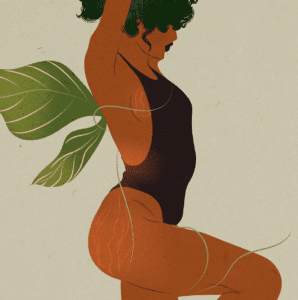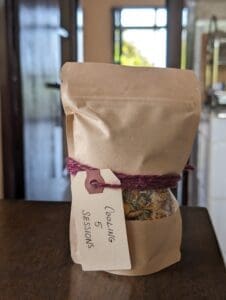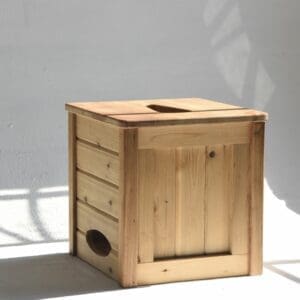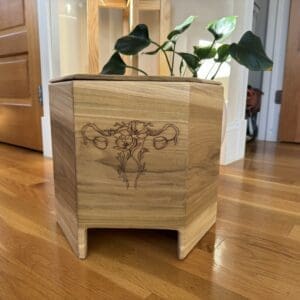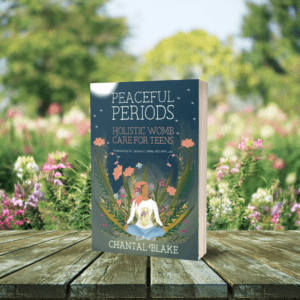Uterine fatigue is an imbalance where the uterus is tired and, as a result, cannot hold the uterine arteries closed. This fatigue results in bleeding issues where blood either trickles out (fresh spotting) or floods (heavy bleeding). This continues until the uterus is able to gain enough energy to close the arteries. Uterine fatigue may occur because of overall body fatigue and also not resting the uterus adequately during menstruation.
-Short menstrual cycle (27 days or less)
-Spotting (fresh red or pink)
-Two periods per month
-Spontaneous bleeding
-Post-sex bleeding
-Irregular bleeding
-Ongoing periods that don’t stop
-Long periods
-Early Ovulation
-Unexplained Infertility / Difficulty Conceiving
-Early Postpartum Menstrual Return
-Abnormal Uterine Bleeding
-Early Menarche
-Pre-term Labor
-Miscarriage
-Fatigue
Uterine fatigue itself is not a concept from western medicine. Short cycles are considered normal as long as they are consistent. Abnormal uterine bleeding may be dismissed as perimenopause as early as age 30. Heavy bleeding is usually monitored and endured until the point of needing a blood transfusion. Uterine bleeding is not often seen as something to treat even if it doesn’t fit a normal menstrual cycle pattern.
Signs of uterine fatigue may be medically diagnosed as the following:
-Menorrhagia
-Friable cervix
-Abnormal uterine bleeding
-Perimenopause
Medical treatment varies and ranges from: a) not being treated at all; b) uterine ablation (burning the inside of the endometrial layer off); c) pain medications; d) birth control; e) hormone replacement therapy; f) dilation and curretage; g) progesterone inserted directly into the veins; or h) IUD insertion .
The concept of uterine fatigue correlates to patterns with Spleen Qi Deficiency and Qi Deficiency whose blood is escaping the channels. As uterine fatigue is discussed here it also may include heat bleeding patterns as it doesn’t distinguish if the bleeding is from Heat or Qi deficiency. But the term is mostly meant to pertain to Spleen Qi Deficiency type bleeding patterns.
STEAM RESPONSIVENESS
Moderate.
Needs to be coupled with additional practices to be all the way successful.
Uterine fatigue is moderately responsive to steam therapy but if, and only if, the user has the correct steam herbs, setup, duration and schedule. Using the wrong herbs, setup, duration or schedule can be counterproductive.
That said, even when steaming correctly, there is nothing that can replace rest. It’s like having coffee when tired. That may be helpful for an amount of time but, ultimately, it does not replace the need for sleep.
HOW DOES IT WORK?
When it comes to uterine fatigue, steaming can be helpful by introducing herbs that help to strengthen the uterus and prevent bleeding – however, steam therapy must be coupled with rest in order to be successful.
WHAT TO EXPECT
Ideally, steaming causes inter-cycle spotting or bleeding to go away entirely and elongates the cycle to 28 days. This usually happens over several months time where the spotting improves a little each month and the cycle gets longer a day or two at a time until it reaches 28 days.
Sometimes the cycle stays the same or gets shorter. In these cases it’s really important to work with a Peristeam Hydrotherapist to adjust the herbs, setup and schedule.
STEAM THERAPIST RECOMMENDATION
Yes. It is necessary to work with a practitioner to find out the right steam setup, duration and herbs. A Peristeam Facilitator can help with this. Usually someone with uterine fatigue would never steam longer than 10 min duration, would not steam with an electric burner and would use a hemostatic herb formula. In some cases the duration might even be shorter and the herbs may need to be modified to best fit the user. Weekly steaming can often be helpful.
PERISTEAM HYDROTHERAPIST
For best results a consultation with a Peristeam Hydrotherapist is recommended for a personalized steam schedule targeted specifically at the uterine fatigue.
It is recommended to have an initial consultation plus two follow up consultations. The follow up consultations should take place after each following period or monthly.
During the follow-up consultation the steam therapist will be able to read the menstrual cycle to determine how the cycle is responding to the steam schedule and herbs and modify accordingly. With uterine fatigue it is very common that the steam plan and herbs will change after the first few periods.
DEDICATION TIME
Three months
People who have the best results naturally balancing uterine fatigue work with a Peristeam Hydrotherapist and follow the steam schedule very closely for several consecutive months in a row. By the end of the three months the practitioner and user should have a a good handle on a maintenance steam schedule and any continuing uterine fatigue triggers that need attention. For best results also commit to working with an acupuncturist during this time period.
Uterine fatigue is an imbalance where the uterus is tired and, as a result, cannot hold the uterine arteries closed. This fatigue results in bleeding issues where blood either trickles out (fresh spotting) or floods (heavy bleeding). This continues until the uterus is able to gain enough energy to close the arteries. Uterine fatigue may occur because of overall body fatigue and also not resting the uterus adequately during menstruation.
Indicators/Body Signs:
-Short menstrual cycle (27 days or less)
-Spotting (fresh red or pink)
-Two periods per month
-Spontaneous bleeding
-Post-sex bleeding
-Irregular bleeding
-Ongoing periods that don’t stop
-Long periods
Health Topics/Concerns:
-Early Ovulation
-Unexplained Infertility / Difficulty Conceiving
-Early Postpartum Menstrual Return
-Abnormal Uterine Bleeding
-Early Menarche
-Pre-term Labor
-Miscarriage
-Fatigue
Medical Diagnosis and Treatment:
Uterine fatigue itself is not a concept from western medicine. Short cycles are considered normal as long as they are consistent. Abnormal uterine bleeding may be dismissed as perimenopause as early as age 30. Heavy bleeding is usually monitored and endured until the point of needing a blood transfusion. Uterine bleeding is not often seen as something to treat even if it doesn’t fit a normal menstrual cycle pattern.
Signs of uterine fatigue may be medically diagnosed as the following:
-Menorrhagia
-Friable cervix
-Abnormal uterine bleeding
-Perimenopause
Medical treatment varies and ranges from: a) not being treated at all; b) uterine ablation (burning the inside of the endometrial layer off); c) pain medications; d) birth control; e) hormone replacement therapy; f) dilation and curretage; g) progesterone inserted directly into the veins; or h) IUD insertion .
Traditional Asian Medicine / Acupuncture:
The concept of uterine fatigue correlates to patterns with Spleen Qi Deficiency and Qi Deficiency whose blood is escaping the channels. As uterine fatigue is discussed here it also may include heat bleeding patterns as it doesn’t distinguish if the bleeding is from Heat or Qi deficiency. But the term is mostly meant to pertain to Spleen Qi Deficiency type bleeding patterns.
Steam Therapy:
STEAM RESPONSIVENESS
Moderate.
Needs to be coupled with additional practices to be all the way successful.
Uterine fatigue is moderately responsive to steam therapy but if, and only if, the user has the correct steam herbs, setup, duration and schedule. Using the wrong herbs, setup, duration or schedule can be counterproductive.
That said, even when steaming correctly, there is nothing that can replace rest. It’s like having coffee when tired. That may be helpful for an amount of time but, ultimately, it does not replace the need for sleep.
HOW DOES IT WORK?
When it comes to uterine fatigue, steaming can be helpful by introducing herbs that help to strengthen the uterus and prevent bleeding – however, steam therapy must be coupled with rest in order to be successful.
WHAT TO EXPECT
Ideally, steaming causes inter-cycle spotting or bleeding to go away entirely and elongates the cycle to 28 days. This usually happens over several months time where the spotting improves a little each month and the cycle gets longer a day or two at a time until it reaches 28 days.
Sometimes the cycle stays the same or gets shorter. In these cases it’s really important to work with a Peristeam Hydrotherapist to adjust the herbs, setup and schedule.
STEAM THERAPIST RECOMMENDATION
Yes. It is necessary to work with a practitioner to find out the right steam setup, duration and herbs. A Peristeam Facilitator can help with this. Usually someone with uterine fatigue would never steam longer than 10 min duration, would not steam with an electric burner and would use a hemostatic herb formula. In some cases the duration might even be shorter and the herbs may need to be modified to best fit the user. Weekly steaming can often be helpful.
PERISTEAM HYDROTHERAPIST
For best results a consultation with a Peristeam Hydrotherapist is recommended for a personalized steam schedule targeted specifically at the uterine fatigue.
It is recommended to have an initial consultation plus two follow up consultations. The follow up consultations should take place after each following period or monthly.
During the follow-up consultation the steam therapist will be able to read the menstrual cycle to determine how the cycle is responding to the steam schedule and herbs and modify accordingly. With uterine fatigue it is very common that the steam plan and herbs will change after the first few periods.
DEDICATION TIME
Three months
People who have the best results naturally balancing uterine fatigue work with a Peristeam Hydrotherapist and follow the steam schedule very closely for several consecutive months in a row. By the end of the three months the practitioner and user should have a a good handle on a maintenance steam schedule and any continuing uterine fatigue triggers that need attention. For best results also commit to working with an acupuncturist during this time period.











